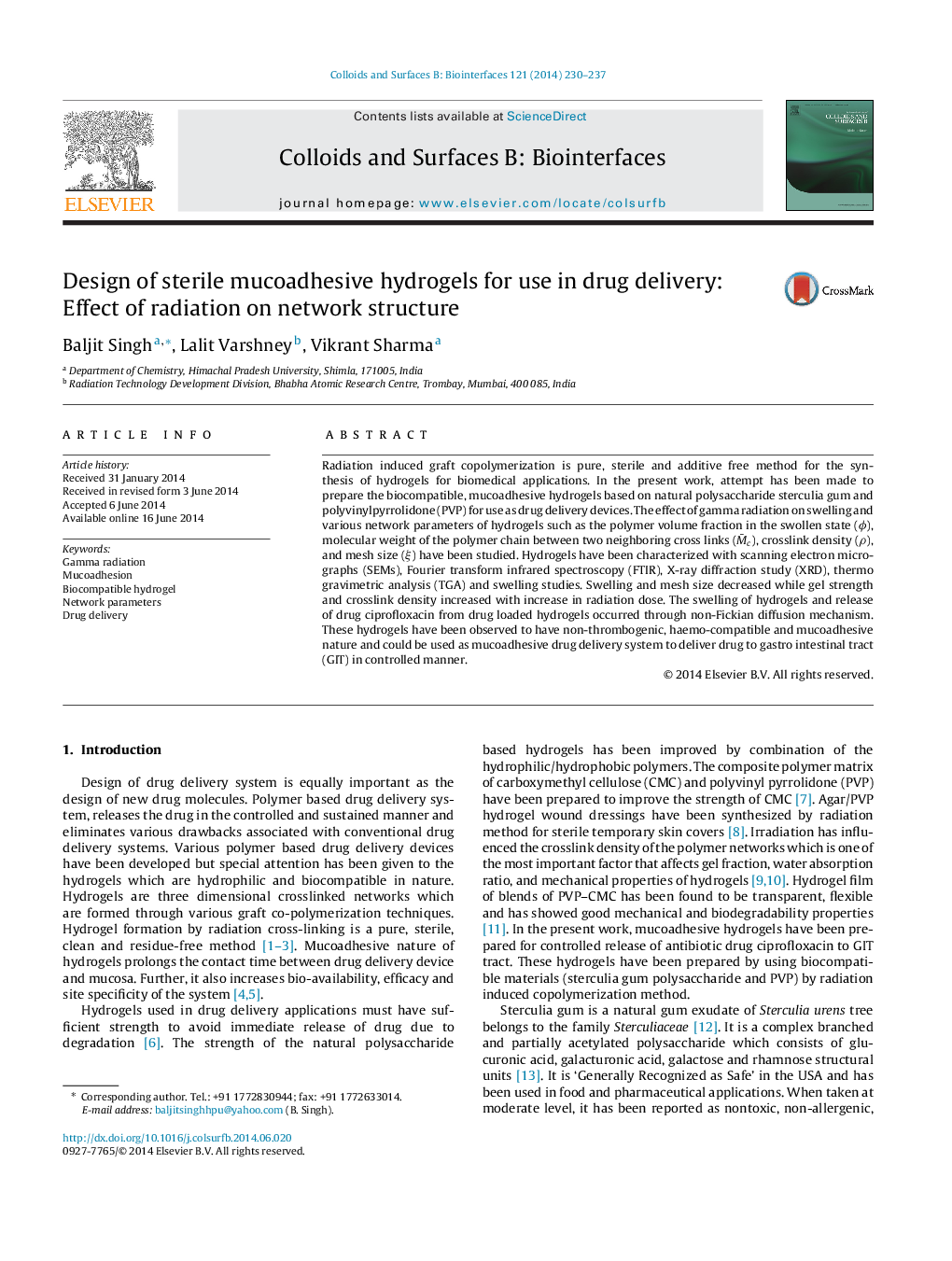| Article ID | Journal | Published Year | Pages | File Type |
|---|---|---|---|---|
| 599628 | Colloids and Surfaces B: Biointerfaces | 2014 | 8 Pages |
•Swelling of hydrogels decreased and gel strength increased with increase in radiation dose.•Crosslink density increased and mesh size decreased with increasing radiation dose.•Drug release is more in acidic pH buffer and occurred through non-Fickian diffusion mechanism.•Hydrogels showed good blood compatibility and mucoadhesion with intestinal mucosa.
Radiation induced graft copolymerization is pure, sterile and additive free method for the synthesis of hydrogels for biomedical applications. In the present work, attempt has been made to prepare the biocompatible, mucoadhesive hydrogels based on natural polysaccharide sterculia gum and polyvinylpyrrolidone (PVP) for use as drug delivery devices. The effect of gamma radiation on swelling and various network parameters of hydrogels such as the polymer volume fraction in the swollen state (ϕ ), molecular weight of the polymer chain between two neighboring cross links (M¯c), crosslink density (ρ), and mesh size (ξ) have been studied. Hydrogels have been characterized with scanning electron micrographs (SEMs), Fourier transform infrared spectroscopy (FTIR), X-ray diffraction study (XRD), thermo gravimetric analysis (TGA) and swelling studies. Swelling and mesh size decreased while gel strength and crosslink density increased with increase in radiation dose. The swelling of hydrogels and release of drug ciprofloxacin from drug loaded hydrogels occurred through non-Fickian diffusion mechanism. These hydrogels have been observed to have non-thrombogenic, haemo-compatible and mucoadhesive nature and could be used as mucoadhesive drug delivery system to deliver drug to gastro intestinal tract (GIT) in controlled manner.
Graphical abstractFigure optionsDownload full-size imageDownload as PowerPoint slide
